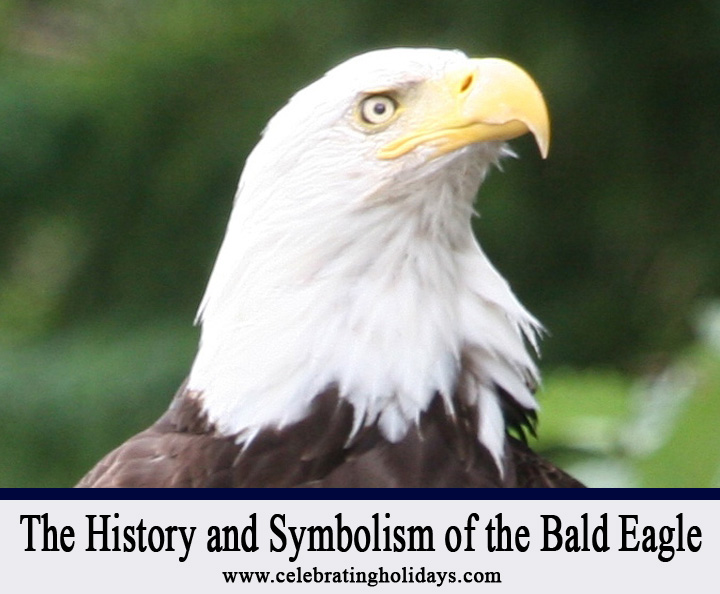Bald Eagle
The Bald Eagle became a national emblem of the United States on June 20, 1782, the day the design was chosen for the Great Seal of our country. The magnificent creature can now be found with outstretched wings on coins, bills, and stamps.

Eagles have long been a symbol of power and strength. In ancient Rome, eagle imagery was particularly prominent, and the Founding Fathers were known to compare their new republic to the old Roman Republic. Thus it came as no surprise when Congress adopted a design for its national seal, or coat of arms, which prominently featured an eagle.
William Barton, a young lawyer with artistic skill, who was selected to help with the design of the Great Seal originally featured an Imperial eagle. But Charles Thomson, Secretary of Congress, felt that the symbol should be strictly American. He asked Barton to replace the Imperial eagle with the native American bald eagle (note that Early Americans used the word “bald” to mean “white,” not hairless) (Great Seal of the United States, US Department of State, Bureau of Public Affairs, p. 5).
In early America, bald eagles were plentiful, but as pioneers moved west, people began to hunt the bird for sport. With time, they became more and more scarce. By 1940, Congress passed a law forbidding the capture or killing of a bald eagle. But the bird faced another danger: Widespread use of pesticides, particularly DDT, was drastically lowering the eagles’ birth rate. By 1970, experts estimated that there were fewer than a thousand bald eagles in the U.S. Fortunately, since DDT was banned in 1972, the eagle population has begun to slowly increase.
Ben Franklin and the Turkey
In regard to the popular story that Benjamin Franklin preferred a turkey (instead of the bald eagle) as a national emblem, there is a great article on this topic at www. americanheraldy.org. In summary, Franklin was not involved in the selection of the bald eagle for the Great Seal. He was in Paris when the decision was made. His humorous commentary on the merits of the turkey were written in a private letter to his daughter in a discussion about the eagle on the badge of an American military fraternity (the Society of the Cincinnati):
“Others object to the Bald Eagle, as looking too much like a Dindon, or Turkey. For my own part I wish the Bald Eagle had not been chosen as the Representative of our Country. He is a Bird of bad moral Character… Besides he is a rank Coward: The little King Bird not bigger than a Sparrow attacks him boldly and drives him out of the District. He is therefore by no means a proper Emblem for the brave and honest Cincinnati ofAmerica who have driven all the King birds from our Country, tho’ exactly fit for that Order of Knights which the French call Chevaliers d’Industrie [literally “a Knight of Industry” defined as someone who lives by wit, especially through fraud and swindling].
“I am on this account not displeas’d that the Figure is not known as a Bald Eagle, but looks more like a Turkey. For in Truth the Turkey is in Comparison a much more respectable Bird, and withal a true original Native of America… He is besides, tho’ a little vain and silly, a Bird of Courage, and would not hesitate to attack a Grenadier of the British Guards who should presume to invade his Farm Yard with a red Coat on” (www. americanheraldy.org).
Franklin was well known for his satirical style. Had he really been opposed to the eagle as a national emblem, he kept uncharacteristically quiet about it!
This page was created by:

Back to main July 4th Symbols page.
We welcome your ideas! If you have suggestions on how to improve this page, please contact us.
You may freely use this content if you cite the source and/or link back to this page.